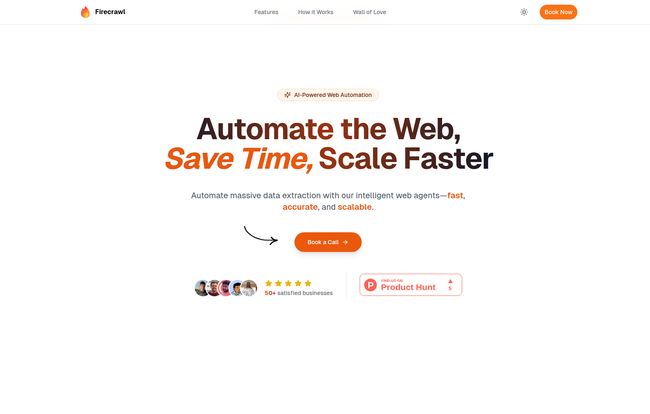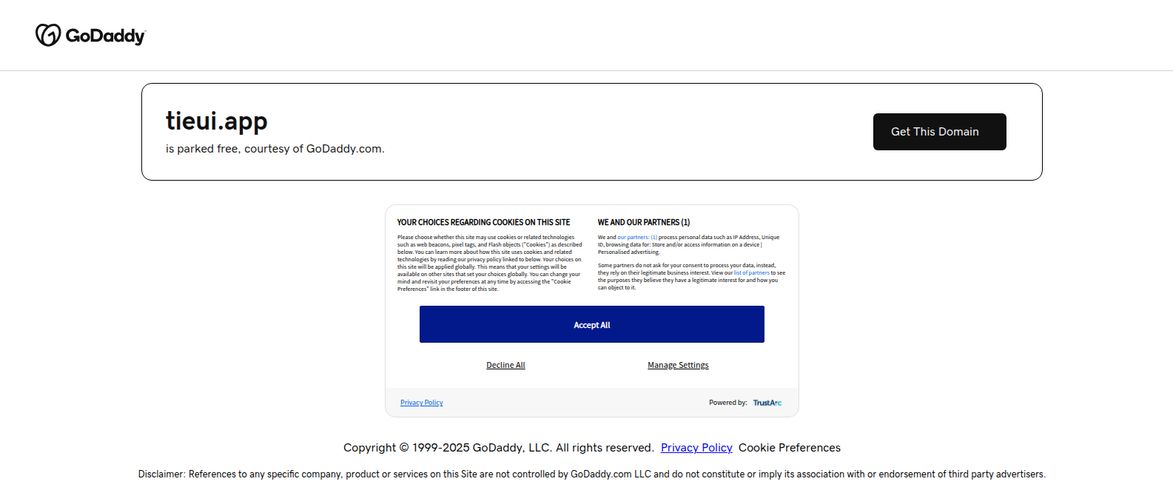If you've been in the SEO or digital marketing game for more than a few months, you know the grind. The real grind. I’m not talking about the fun strategy sessions or the thrill of seeing your site hit page one. I’m talking about the mind-numbing, soul-crushing, carpal-tunnel-inducing task of collecting data.
Competitor backlink profiles. Product data from a dozen eCommerce sites. Scraping SERPs for a massive keyword audit. It's the digital equivalent of digging a ditch. Necessary, but nobody enjoys it. We've all been there, copy-pasting into a spreadsheet at 2 AM, wondering if this is what we went to college for.
So, when a tool like FireScrap pops up on my radar, claiming to “Automate the Web, Gather Data Faster” with AI agents, my inner skeptic and my exhausted inner marketer both sit up and pay attention. Another AI tool promising to solve all our problems? Color me intrigued, but not yet convinced. I decided to take it for a spin, to see if it’s just more marketing fluff or if it’s the real deal.
What Exactly is FireScrap, Anyway?
Forget the jargon for a moment. At its heart, FireScrap is like hiring a team of incredibly smart, ridiculously fast robot interns. You give them a list of websites, tell them what information you need, and they go out and fetch it for you. No coffee breaks, no complaining, no accidental typos.
It’s built around this idea of “intelligent web agents.” These aren’t your clumsy, old-school scrapers that smash into a website’s front door and immediately get blocked. These are designed to be a bit more… subtle. They navigate websites like a human would, which is a pretty big claim and something I was eager to test.
The platform isn’t just about pulling data, though. It’s also about automating tasks—things like migrating a whole WordPress site, keeping track of competitor pricing on an eCommerce store, or even automating bookings. It's a broader vision than just a simple scraper.
The Never-Ending Headache of Web Scraping
Why does a tool like this even need to exist? Because, frankly, getting data off the modern web is a pain. A huge pain. You're not just fighting against simple HTML anymore. You're fighting against:
- IP Blocks & CAPTCHAs: The website sees you’re making too many requests and just slams the door in your face.
- Dynamic Content: Remember those cool websites where new products or posts load as you scroll? That’s usually JavaScript at work. And it’s the bane of most basic scrapers, which can only see the initial, static page content.
- Messy Data: Even if you get the data, it's often a jumbled mess of HTML tags and weird formatting that you have to spend hours cleaning up before it’s even usable.
I once spent the better part of a weekend trying to pull product information from a supplier’s site built in the early 2000s. Every click loaded a new, strangely formatted page. By the end, I had a Frankenstein's monster of a spreadsheet and a newfound appreciation for my sanity. That's the problem FireScrap is trying to solve.

Visit FireScrap
Putting FireScrap's Features to the Test
Alright, let's get into the nitty-gritty. A tool is only as good as its features, right? I poked around the key functions to see what stood out.
The "Smart Web Agent" - A Digital Ghost in the Machine?
This was the biggest thing for me. FireScrap claims its agents mimic human behavior. In my experience, this means they likely rotate proxies, manage browser fingerprints, and use intelligent delays to avoid looking like a bot. While I couldn’t see the secret sauce, the results were impressive. I pointed it at a few sites that are notoriously difficult to scrape, and it handled them without immediately getting booted. This is a huge step up from some older tools that basically just send a simple GET request and hope for the best.
Taming the Dynamic Content Beast
This is where FireScrap really started to shine. I tested it on a product page where reviews were hidden behind a "Load More" button. A simple scraper would miss all of them. FireScrap’s agent was able to click the button, wait for the new content to load, and then extract it. For anyone who needs to gather data from modern, interactive websites, this feature alone is worth its weight in gold. It saves you from having to mess with complex tools like Selenium or Puppeteer, which is a world of hurt if you're not a developer.
Data That's Actually Ready for AI
I loved this. One of the advertised features is that it can format the extracted data directly into Markdown. Why does this matter? Because if you’re planning on feeding this data into a Large Language Model (LLM) like GPT-4 for analysis or summarization, you need clean, structured input. The old saying "garbage in, garbage out" has never been more true than in the age of AI. Getting data that’s already pre-formatted and cleaned up for LLM ingestion is a massive time-saver. It shows they're thinking a step ahead, not just about getting the data, but about what you’ll do with it.
The Good, The Bad, and The... Missing Price Tag
No tool is perfect, and a real review has to cover both sides. So, after my time with it, here’s my breakdown.
The advantages are pretty clear. The time you save is enormous. A task that might take a junior team member two days of manual work could potentially be automated in a few hours. The data is cleaner, the process is scalable, and you get to own the AI agents you create, which is a nice touch. It gives you a sense of control and avoids complete vendor lock-in. The ability to handle complex sites and then format the data for modern AI applications is, I have to say, a powerful combination.
On the flip side, this isn’t a one-click magic wand. The documentation suggests you’ll need to do some initial setup to configure your AI agents. This isn’t necessarily a con—powerful tools require some configuration—but it’s not for someone who wants instant results with zero effort. You're also relying on their platform to do the heavy lifting, and if you need a truly unique, custom agent for a bizarrely built website, there might be a development cost associated with that. It's a professional tool, and it comes with a professional-level learning curve.
What's the Damage? A Look at FireScrap Pricing
And now for the big question: how much does it cost? Well, that's teh one thing I couldn't find. As of writing this, FireScrap doesn’t have a public pricing page. This usually means one of two things: they're either still in an early stage and finalizing their pricing, or they're targeting enterprise clients with custom quotes. My gut tells me it's the latter. For complex automation and data tasks, a “one-size-fits-all” price rarely works. You'll likely need to contact them, discuss your specific needs, and get a tailored quote. Don't expect a simple $29/month plan.
Who is FireScrap Really For?
So, who should be knocking on FireScrap's door?
- SEOs and Marketing Agencies: Absolutely. For automating competitor analysis, large-scale keyword research, content audits, and brand monitoring, this could be a secret weapon.
- Data Scientists & Analysts: If you need to build large, clean datasets from various web sources for your models, this is designed for you.
- eCommerce Businesses: For tracking competitor prices, monitoring product availability, or managing your own product data across platforms.
- Developers: To automate tedious data migration and integration tasks for clients without having to build a custom solution from scratch every single time.
This probably isn’t the right tool for a student who just needs to grab a table of data for a school project one time. It's built for recurring, scalable, professional-grade tasks.
My Final Verdict: Is FireScrap a Game-Changer?
I came into this review a bit jaded by the endless wave of AI tools, but I'm walking away genuinely impressed. FireScrap feels different. It's not just another scraper. It's an automation platform built with a deep understanding of the actual problems we face when trying to wrangle data from the wild, messy web.
Is it a game-changer? For the right person, I think it could be. If you're an individual or a business whose workflow is constantly bottlenecked by manual data collection, the ROI here could be massive. The initial setup might take some thought, but the long-term payoff in saved hours and reduced errors seems well worth it. It turns data collection from a manual chore into a strategic asset.
It's a powerful, well-thought-out tool for a difficult job. And in this industry, that’s a rare and beautiful thing.
Frequently Asked Questions
- How is FireScrap different from other web scrapers like Octoparse or ParseHub?
- The main difference seems to be the emphasis on "AI-powered agents" that mimic human behavior to avoid blocks and handle dynamic content more effectively. It also appears to have a broader focus on task automation, like WordPress migrations, rather than just data extraction.
- Do I need to know how to code to use FireScrap?
- For basic scraping tasks using a single link, it seems to be no-code friendly. However, the documentation mentions custom parsing and custom agent development, which would likely require some technical know-how or collaboration with a developer for very specific or complex tasks.
- Is using a tool like FireScrap legal?
- This is a big topic. Generally, scraping publicly available data is legal, but you have to be ethical about it. A good rule of thumb for any SEO pro is to respect a website's `robots.txt` file, its Terms of Service, and not to overload its servers with aggressive requests. FireScrap's human-like approach likely helps in being a more 'polite' scraper. Always be mindful of privacy and copyright laws.
- What does "full ownership of the AI agent and collected data" mean?
- This is a key benefit. It means the specific configuration or 'bot' you create for a task is your asset. You're not just renting access to a tool; you're building a reusable resource. And, of course, any data you collect is 100% yours, which is critical for privacy and security.
- How might the WordPress migration feature work?
- While details are sparse, it likely works by having an AI agent log into your old WordPress site, systematically navigate through posts, pages, and media, extract the content (text, images, metadata), and then format it for import into a new WordPress installation. This could automate a notoriously tedious and error-prone process.



